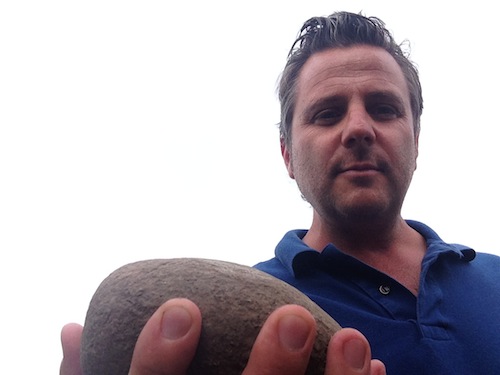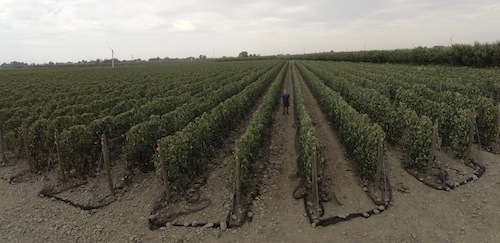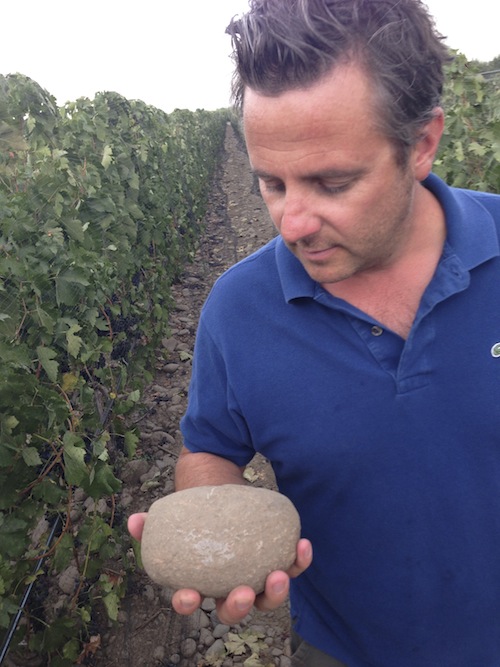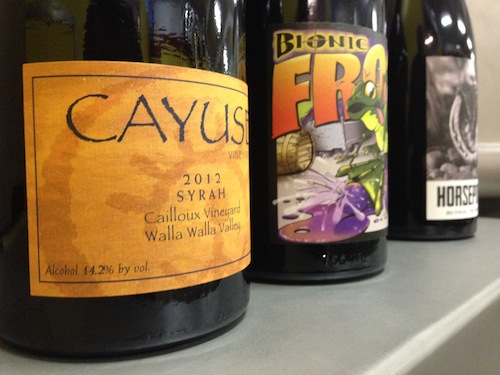
MILTON-FREEWATER, Ore. – Nobody is better positioned to take full advantage of the Pacific Northwest’s newest American Viticultural Area than Christophe Baron of Cayuse Vineyards.
Yet the Frenchman who discovered the region now known as The Rocks District of Milton-Freewater will likely never put the new AVA on his label.
Baron, a native of Champagne, owns 60 acres of vineyards in The Rocks District and recently completed a new winemaking facility in the heart of the AVA, which is on the Oregon side of the Walla Walla Valley.
“This is a very special area,” Baron told Great Northwest Wine. “But I think there’s something much more interesting that could have been created than an AVA.”
The irony is he is one of the few who legally can use it on his label – for the moment.
Discovering The Rocks District of Milton-Freewater

The main distinguishing feature of The Rocks District is the preponderance of potato-sized cobblestones within the 3,767-acre AVA. They are remnants of the Walla Walla River’s ancient route from the Blue Mountains. Near the end of the last ice age some 15,000 years ago, huge amounts of water carried the rocks here.
For the better part of a century, farmers have planted here. Today, it’s primarily orchards, but grapes have been grown here, too. Kevin Pogue, the Whitman College geology professor who wrote the federal petition to have The Rocks District recognized as an AVA, has discovered evidence of vineyards being planted here nearly a century ago.
“I found reports showing there were vineyards here in the early 1900s,” he said. “There’s still some wild Cinsault growing in fields abandoned in the 1930s. It should be a historical landmark.”
Who knows if that would have been the end of viticultural ventures in The Rocks District had Baron not decided to stop to visit a friend on his way to the Willamette Valley, where he planned to start a winemaking venture. It was April 1996, and Baron was staying with his buddy Scott Byerley.
“I came with my wine atlas,” Baron said. “I was going through photos and showed him Châteauneuf-du-Pape.”
Châteauneuf-du-Pape is an area in France’s southern Rhône Valley where red wines are made with such grape varieties as Syrah, Grenache and Mourvèdre. It is renowned for cobblestones that cover the ground. Byerley told Baron he knew of a place that looked like Châteauneuf-du-Pape, so the next day, they drove south toward Milton-Freewater.
“This is where I first met the stones,” Baron said. “I asked him to pull over, I jumped out of his pickup and looked at this open field that was littered with stones the size of softballs. I said, ‘This is it. I’m not going to the Willamette Valley. I’m going to stay here in Walla Walla, and I’m going to plant Syrah.’ ”
He soon bought land and by March 1997 began planting the area’s first commercial vineyard since the 1950s.
“Several farmers here in the area said the little Frenchman was crazy to plant a vineyard in the stones,” Baron said. “But in the years after, some of these farmers pulled out orchards and planted vineyards. Not so crazy! Without the stones, I would not be here in Walla Walla.”
Baron’s wines have since become the darling of such influential periodicals as Wine Spectator and Wine Advocate.
Since Baron’s remarkable success, others have followed. Today, more than 200 acres of vines are planted in The Rocks District of Milton-Freewater.
The Rocks District labeling controversy

With the new AVA comes an unusual issue. It is entirely within the Walla Walla Valley, which is entirely within the Columbia Valley. However, The Rocks District also is completely in Oregon. And thanks to a quirk in federal wine labeling laws, no winery in Washington may use “The Rocks District of Milton-Freewater” on its label because the AVA doesn’t cross into Washington.
Pogue is well aware of the issue, and he said the Alcohol and Tobacco, Tax and Trade Bureau (TTB) – the federal agency that regulates alcohol industries – is working to figure it out.
“The TTB realizes the problem,” he said.
In fact, the TTB is expected to issue a proposed ruling today that would allow Washington wineries to use the AVA name on labels. It must go through a 60-day commenting period first, but Pogue and others in and around the wine industry said they expect few issues.
If not for this expected change, a Washington winery would need to license a separate facility on the Oregon side of the border to be able to use the name. The irony is that a winery as far away as Ashland near the California border could use the name but a winery such as Saviah Cellars – which owns a vineyard in The Rocks District and is just a few blocks north of the state line – would not be able to unless changes are made.
Rich Funk, owner of Saviah Cellars, is unconcerned.
“The fact that I can’t use that on my label doesn’t bother me,” he said. “It is going to happen eventually. Thanks to guys like Kevin Pogue, there will be a solution.”
No ‘Rocks’ for Cayuse Vineyards

Meanwhile, Baron is perfectly positioned to take full advantage of the new AVA. All of his vineyards are in The Rocks District, as is his production facility. In every sense, Cayuse Vineyards is an Oregon winery. And that means he could use the new name on his label the next time he bottles.
But he won’t.
“TTB rules are completely obsolete and need to be changed,” Baron said. “Instead of creating an AVA, create a district, create an LLC, set your own rules. I envision something more like that.”
He also doesn’t care for the name of the new AVA.
“The TTB is very restrictive on what you can use,” he said. “The Rocks District of Milton-Freewater is very confusing.”
He doesn’t even like the term “rocks” – preferring to use the word “stones” to describe the cobbles.
And with fewer than 20 years of history growing grapes here, Baron said The Rocks District has only just begun to prove itself, a period of time too short to reveal its full potential. He has planted Rhône and Bordeaux varieties, as well as Tempranillo.
“It’s a brand new area with no history.”
Baron said he also believes that if a winery wants to use the AVA name on its label, it should be located inside the region’s boundaries.
“It’s like having a Champagne house in Paris,” he said. “It should be in Champagne. You cannot have the milk and the butter.”
Because Baron has made his reputation with his cobble-filled vineyards, he’s not concerned about using the name for marketing purposes.
“Customers are very savvy, and they know what they like,” he said. “They know Cayuse is in The Rocks, even though it’s not on the label.”
He also realizes he’s alone in this attitude, and he’s OK with that.
“I’m probably the only one who thinks like this,” he said. “I’m playing by my rules. It’s what I’ve always done. I like to be free, and I think these rocks would have liked to be free. They don’t need to be put in a reservation. Let the rocks be free.”

Interesting attitude – can’t say that I blame him as the AVA name is cumbersome and dang few have ever heard of Milton-Freewater.